I had been noticing that one of my Aloe Vera plants was not doing well for quite a time, but was lazy enough to ignore those signs.
So, I knew something inevitable was at the door.
And yes:
You guessed it right – My Aloe Vera Plant Suffered From Root Rot.
But I was prepared for it, so…
How to save aloe vera from root rot?
- Take it out of the potting soil
- Wash its root with water and get rid of all the soil from it
- Cut off the brown and mushy leaves
- Prepare new potting mix
- Replant it in a new pot with drainage holes
- Place it in a bright indirect sunlight location
In this article, I will show you step by step how you can save your aloe vera plant from root rot and the early signs it gives so that you can save it in the initial stage only.
Table Of Content
- Saving Aloe Vera From Root Rot (Step By Step)
- Signs of Root Rot In Aloe Vera
- Reasons Behind Rotting of Roots In Aloe Vera
Save Aloe Vera From Root Rot – How To Revive Rotting Aloe Vera Plant
As soon as you discover that your aloe vera has root rot.
It is time to get into action and save as much part of it as we can.
(These are the exact steps I took to save my aloe vera recently, so let’s dive in)
Take Your Plant Out Of The Potting Mix
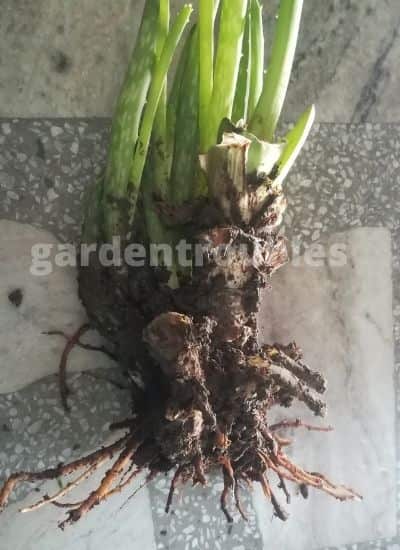
The first step is to take the plant out of the potting mix and look at its root.
You will see the roots have turned all brown and mushy and are very disgusting to look at.
Wash Infected Roots
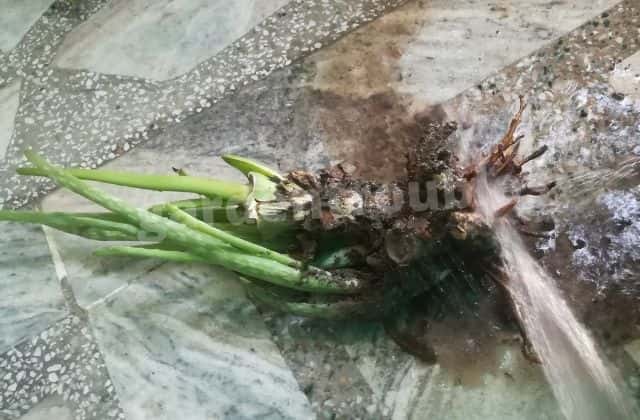
Now the second step is to wash the roots by applying water with pressure. So that all the soil washes out and you can have a clear look at the roots.
Then cut off all the mushy looking roots and only spare the roots that are healthy and green in color.
And don’t worry much about cutting roots as aloe vera starts rooting rapidly once it is given the right condition.
Unfortunately, my aloe vera had rotted quite badly and there was not a single root which could have been spared, so I was left with no option other than discarding it completely.
So, I took the pups that were healthy and were not affected by it.
Removing the Brown Mushy Leaves
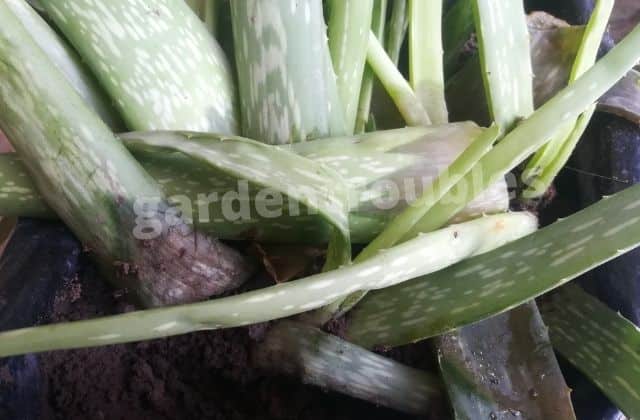
Cut off all the brown and mushy looking leaves as they have been affected with rot and will certainly affect the leaves that come in contact with it.
And the disease will spread all over in no time.
So remove any leave that you think is not healthy and might be infected.
Prepare The Potting Soil
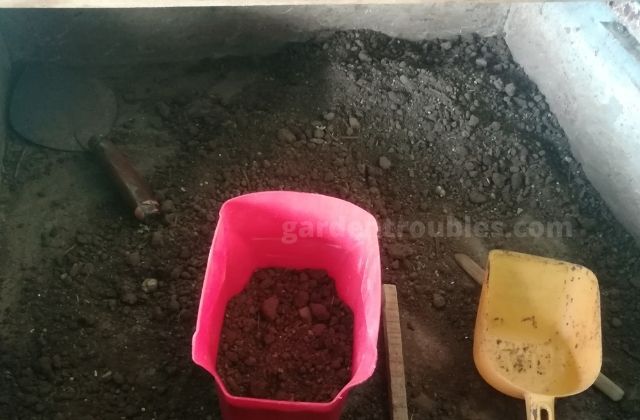
Now is the time to make fresh potting mix for the plant that is left.
As aloe vera requires porous and fast draining soil.
You should make a potting soil with following ratio and ingredients:
- Sand – 40%
- Coco Peat – 20%
- Garden Soil – 20%
- Gravels – 10%
- Compost – 10%
Container

Now fill the potting soil in a pot or any other container with appropriate size.
What I was left with is small aloe vera pups, so I chose a 6 inch pot and made 5-6 drainage holes in it.
So, choose one that is right for your plant’s size.
Replant
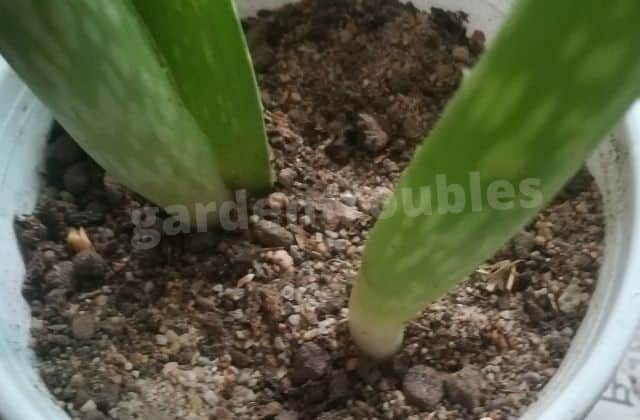
Now take the plant that you have got after removing all the infected roots.
And replant it in fresh potting soil and do not water it for a few days and keep administering it to see if its doing well or not.
Do not water it for 3-5 days as the plant is going through the healing process and is in shock.
If you water it in such a delicate situation the plant will suffer from root rot and will certainly die this time.
Keep the pot in a position where it gets indirect sunlight only, and do not get direct sunlight at any cost as it will be too much for it in this condition.
This is how you can save your aloe vera from root rot.
3 Obvious Signs of Aloe Vera Root Rot
How to tell if your aloe vera has root rot?
Look for these 3 symptoms in your plant and treat it as soon as possible.
Leaves Turning Yellow
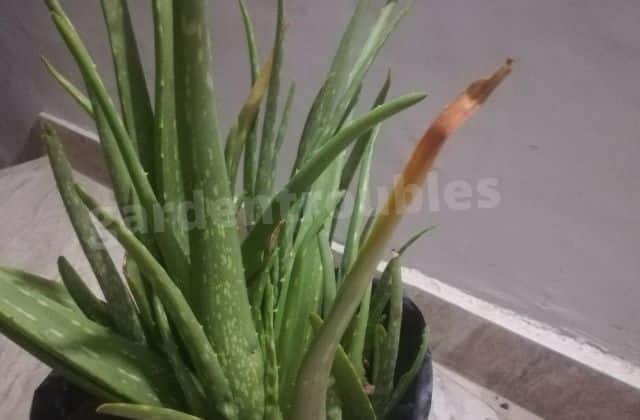
This was one of the early big signs when I should have taken it seriously and administered, but I chose to ignore it. ( Don’t be like me)
If your aloe vera plant leaves are turning yellow, this can be the early symptoms of root rot.
Although there are many reasons behind the yellowing of leaves.
But, in addition to yellowing leaves if the soil is also wet all the time.
Then there are high chances the plant has started to suffer from root rot. ( This is the time when the damage is minimal, so act fast)
Leaves Drooping
As the aloe Vera plant is not able to make food the way it used to due to root rot, its leaves start to get weak and start drooping all over.
You will see that your plant looks lifeless and is no more able to stand up on its own.
This can be because of lack of sunlight as well, but if you have kept your plant in a well lit location then you know what you are looking at.
Leaves Turning Brownish And Squishy From Bottom
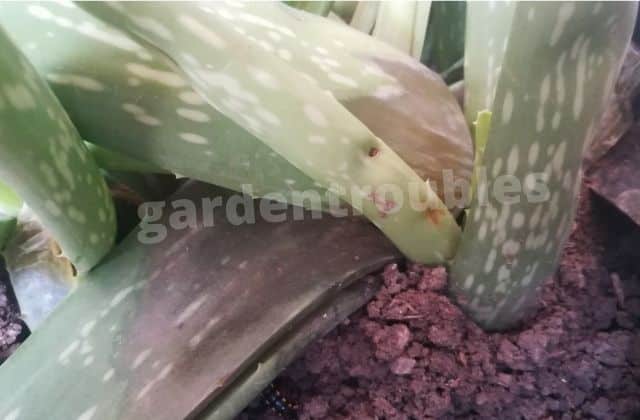
If your plant’s leaves start to turn brownish and mushy from the bottom.
This is the final and last stage from where you have the chance to save your plant.
This is a clear case of root rot.
And you need to work on it immediately, leaving it in this condition will do irreversible damage.
5 Main Reasons Behind Rotting Of Aloe Vera Roots
The most important thing here is:
Why did your aloe vera suffer from root rot, what were the reasons behind it?
If you know them, you won’t have to go through all this ever again.
So, let’s see:
Use of Wrong Potting Soil
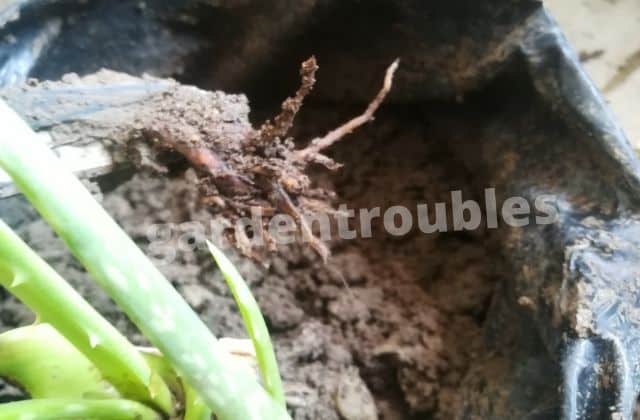
Aloe Vera is a succulent and does best in porous, fast draining soil which can flush out excess amounts of water.
If your soil doesn’t have the same property, root rot will always be around the corner and your aloe vera will keep suffering from it from time to time.
So, to avoid this make a potting mix with mainly sand and perlite.
This will provide enough porosity to the soil and your aloe Vera will be happy forever.
How to take care of succulents
Watering Frequency
Aloe vera needs to breathe between waterings.
By this what I mean is that:
You need to provide a gap between watering it and allow the soil to dry out before you water it the next time.
If you keep on watering it regularly even when the soil is moist, there will be no air circulation and the plant will ultimately suffer from root rot.
Before watering it – always insert your finger inside the soil to see if the soil has become dry or not. If it feels moist then skip watering. This simple thing will keep it healthy.
Little To No Sunlight
Aloe vera needs a good amount of bright indirect sunlight to stay healthy.
If you have kept your plant in a location that receives little to no sunlight, this can very well be the reason behind rotting of aloe vera roots.
Obviously, it makes food with the help of sunlight.
Furthermore, it absorbs most amount of water in the presence of sunlight only to make food, so if it is kept deprived of sunlight, the water in the potting soil won’t be used and result in rotting.
So, keep your plant in a location where it receives at least 3-4 hours of bright indirect sunlight and if you don’t have a source for that, get some grow lights for your plant.
Due For Repotting
Although aloe vera does well in root bound conditions & need not to be repotted frequently.
But in a matter of time, it will start to grow so abruptly with offshoots going in every direction.
And will be too much for the current container to hold it.
One of my aloe vera plants fell down one its own weight because it grew so big.
This is the time when it needs to be thinned, otherwise either your Aloe Vera will have bent leaves or start to rot.
Overwatering
Obviously, the biggest culprit behind rotting of aloe vera roots is overwatering.
Overwatering makes the potting soil wet and the plant is not able to breathe and starts to rot.
Make sure to never water your aloe vera so much that it remains wet forever.
Other factors also come into play in this case, like the draining capacity of potting mix, size of container, drainage holes and the amount of sunlight your plant gets.
But giving it water in excess is never a good idea.
Keep this in mind while watering aloe vera.
The lesser the better.
Wrapping Up
I hope this guide will save your aloe vera plant from root rot and has guided you in the right direction so that you never have to face it again.
Make sure to share your thoughts.
I always love to hear feedback.




